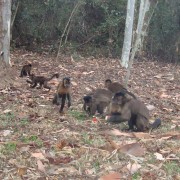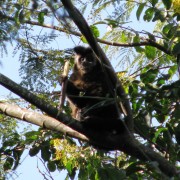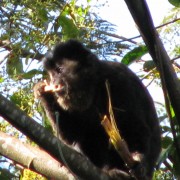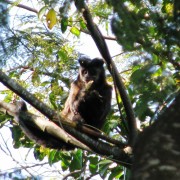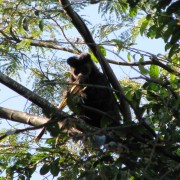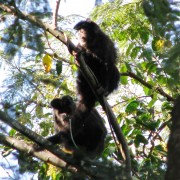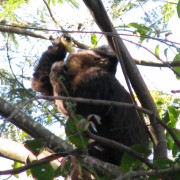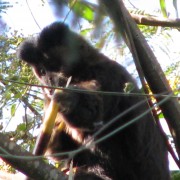Biodiversity
 Spider Monkey
Cebus nigritus | Goldfuss, 1809
Spider Monkey
Cebus nigritus | Goldfuss, 1809
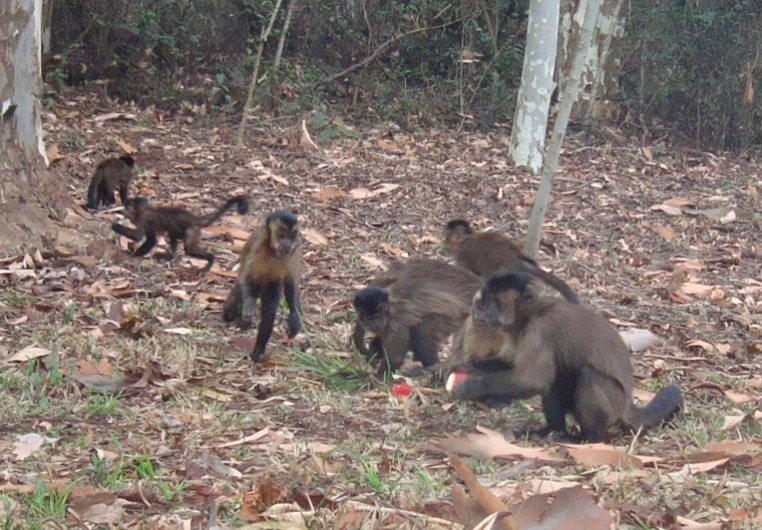
Characteristics: Species with a body length ranging between 35 and 49 cm and a tail measuring 37 to 55 cm; the female is smaller than the male. It has robust body and a semi-prehensile tail.
Distribution: From Nicaragua, in Central America, to Northern Argentina.
Habitat: Primary forests, dry forests, savannas, gallery forests, secondary forests, and even forests changed by man.
Habits: Diurnal and arboreal species that shows preference for the central part of the canopy, while also foraging on the ground and high in the treetops. These animals appear in large groups of up to a hundred individuals, and the guide of the clan is the oldest male. They are very intelligent, incredibly curious, and meek.
Diet: Omnivorous, feeding on fruits, seeds, nuts, flowers, gums, nectar, fungi, sap, eggs, insects, spiders, small vertebrates, and even some species of oysters and crabs found in mangroves.
Breeding: Gestation lasts on average 180 days, from which a single baby is born.
In the UFRA area: The occurrence of this primate was restricted to native forests. It was spotted only 7 times in all surveys; therefore, it is considered of low abundance, but markedly less rare than the howler. They were sighted several times in groups of adults, entering or leaving the stands carrying reeds to feed on, and it is not uncommon to find stems and bagasse in the forests, which indicates a complementary role the crop plays in this species' diet, especially during the winter.




